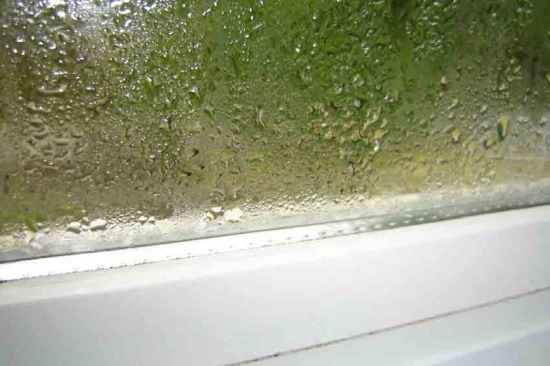


Do some of your windows appear to be sweating? Condensation on the inside and between your window glass can cause numerous problems if left unaddressed. Exterior condensation is not usually an issue and actually indicates that your windows are doing their job of keeping heat inside your home. What can you do to solve window condensation problems and stop the moisture from further damaging your window frames and walls? The following are five helpful solutions for window condensation problems in your Dayton home.
1. Install a Dehumidifer
Summers in Dayton can get pretty humid. If you do not have a dehumidifier, the air inside your home will be humid, too. When this humid air hits the window, which is usually cooler than the air surrounding it, moisture will condense out of the air and accumulate on the window. Installing a whole-home dehumidifier, which will integrate with your HVAC system and run quietly in the background, will keep humidity levels down throughout your home, putting an end to interior condensation.
2. Use Your Exhaust Fans
Is the condensation mainly appearing in and around the kitchen and bathroom? This may be because you are not using your exhaust fans properly after showering and cooking. Both of these activities release moisture into the air. When that moist air hits the cool windows, condensation appears. Get into the habit of using your exhaust fan regularly. If the fan is not strong enough to clear the room of vapor within 10 or 15 minutes of your shower, have it replaced by a more powerful model.
3. Move Plants Away From Your Windows
House plants are great for cleaning your indoor air, but in doing so, they naturally release moisture into the air. This should not be enough moisture to have a huge impact on your Dayton home’s overall humidity level, but it is enough to cause condensation to appear on the windows if the plants are very close to them. Move your plants back from the windows, and you will notice less condensation appearing.
4. Wipe The Moist Areas With Bleach Water
The primary concern with frequent condensation buildup is that it will lead to rot and mold formation. Whenever you notice condensation on your windows, make sure you soak it up promptly. Then, give the window sash and frame a quick wipe-down with some bleach water. This will kill any mold spores before they have a chance to start growing.
5. Replace Windows with Moisture Between the Panes
If the moisture is between the panes of glass rather than inside the window, you have a more serious issue with the windows themselves. Humid air is leaking where it should not be. There is probably a crack or some deterioration in the window sash, allowing the glass to fall loose within the sash. Replacing the glass is not a sufficient solution since the leaks are usually caused by damage to the sash rather than the glass itself. This is a common problem with vinyl windows. The vinyl warps, allowing air and moisture to seep between the glass panes. New windows made from composite, like Fibrex® from Renewal by Andersen, will stay more tightly sealed and resistant to condensation buildup.
Interior window condensation has simple solutions, but between-pane condensation usually requires window replacement. Contact Renewal by Andersen to schedule a free consultation in your Dayton home.